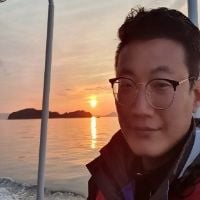Transport of Pollutants in Agricultural Watersheds
A special issue of Water (ISSN 2073-4441). This special issue belongs to the section "Water Quality and Contamination".
Deadline for manuscript submissions: 15 August 2024 | Viewed by 5499
Special Issue Editor
Interests: water environment; pollution; stable isotopes; source identification; environmental forensic science; food web; primary production; biogeochemistry
Special Issue Information
Dear Colleagues,
Most of the water quality management of agriculture, rivers and lakes has been centered on point sources of domestic sewage, livestock wastewater, and industrial wastewater. As point source pollution from industries and urban areas can be removed in significant amounts with the development of wastewater treatment technology, interest in countermeasures against non-point pollution sources is increasing. In particular, complex land basins in which various non-point pollution sources such as farmland, livestock, forests, and urban areas are scattered are difficult to manage because it is difficult to identify pollution sources; as a result, it can be difficult to improve water quality despite the expansion of point pollution source treatment facilities. However, it may be possible to identify the pollution sources when using various chemical properties such as stable isotopes, fluorescent substances, elemental contents, nutrients, etc.
This Special Issue aims to focus on the environmental behavior of water elements and pollutants, the interaction between pollutants and aquatic organisms, and their ecological effects. Additionally, it seeks to explore and analyze the evolution of aquatic ecosystems in order to identify the anthropogenic pollution source. This Special Issue conducts an in-depth and systematic cross-disciplinary research analysis on water environmental quality assessment (including environmental forensic science, ecology, environmental chemistry, etc.). The research results can provide scientific basis and theoretical support for evaluating water quality and potential ecological risks of emerging pollutants.
Dr. Min-Seob Kim
Guest Editor
Manuscript Submission Information
Manuscripts should be submitted online at www.mdpi.com by registering and logging in to this website. Once you are registered, click here to go to the submission form. Manuscripts can be submitted until the deadline. All submissions that pass pre-check are peer-reviewed. Accepted papers will be published continuously in the journal (as soon as accepted) and will be listed together on the special issue website. Research articles, review articles as well as short communications are invited. For planned papers, a title and short abstract (about 100 words) can be sent to the Editorial Office for announcement on this website.
Submitted manuscripts should not have been published previously, nor be under consideration for publication elsewhere (except conference proceedings papers). All manuscripts are thoroughly refereed through a single-blind peer-review process. A guide for authors and other relevant information for submission of manuscripts is available on the Instructions for Authors page. Water is an international peer-reviewed open access semimonthly journal published by MDPI.
Please visit the Instructions for Authors page before submitting a manuscript. The Article Processing Charge (APC) for publication in this open access journal is 2600 CHF (Swiss Francs). Submitted papers should be well formatted and use good English. Authors may use MDPI's English editing service prior to publication or during author revisions.
Keywords
- watershed water environment
- water quality assessment
- stable isotopes
- source identification
- nutrient pollution
- urban sewage
- point and non-point source
- foodway transfer
- climate change





